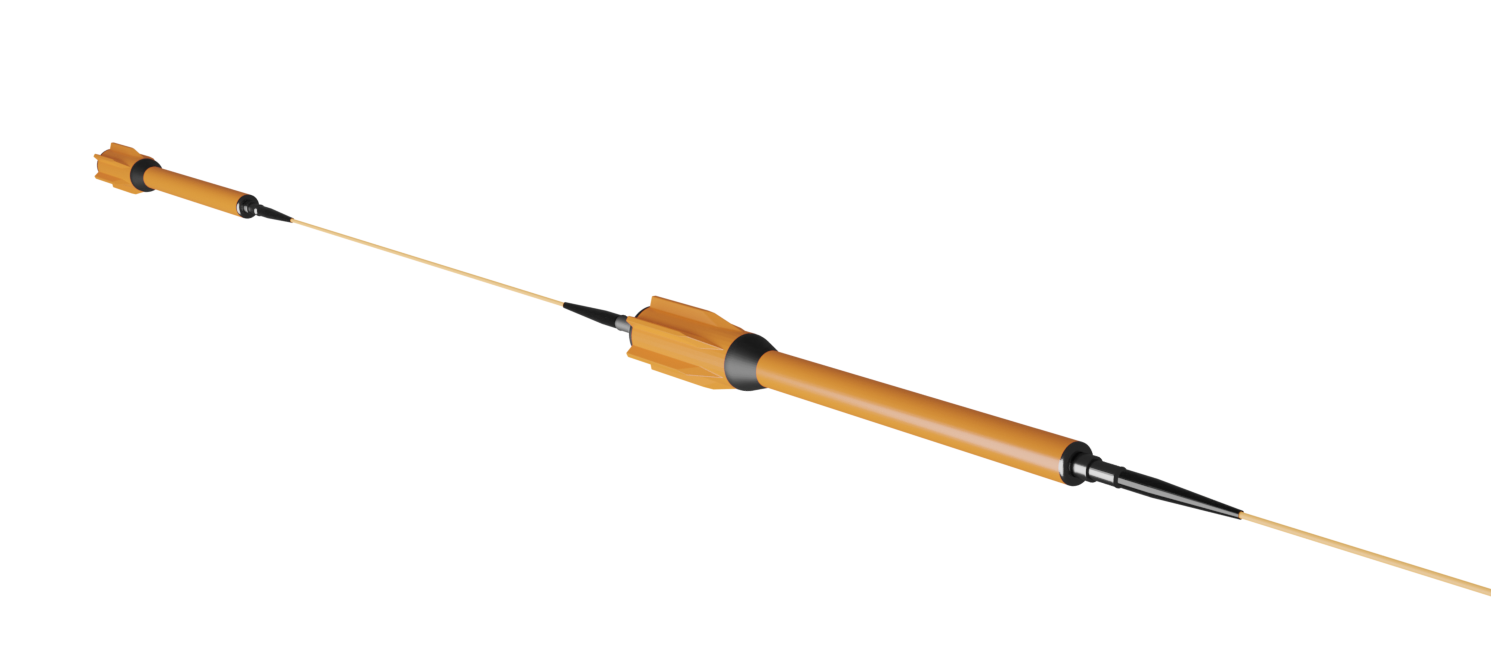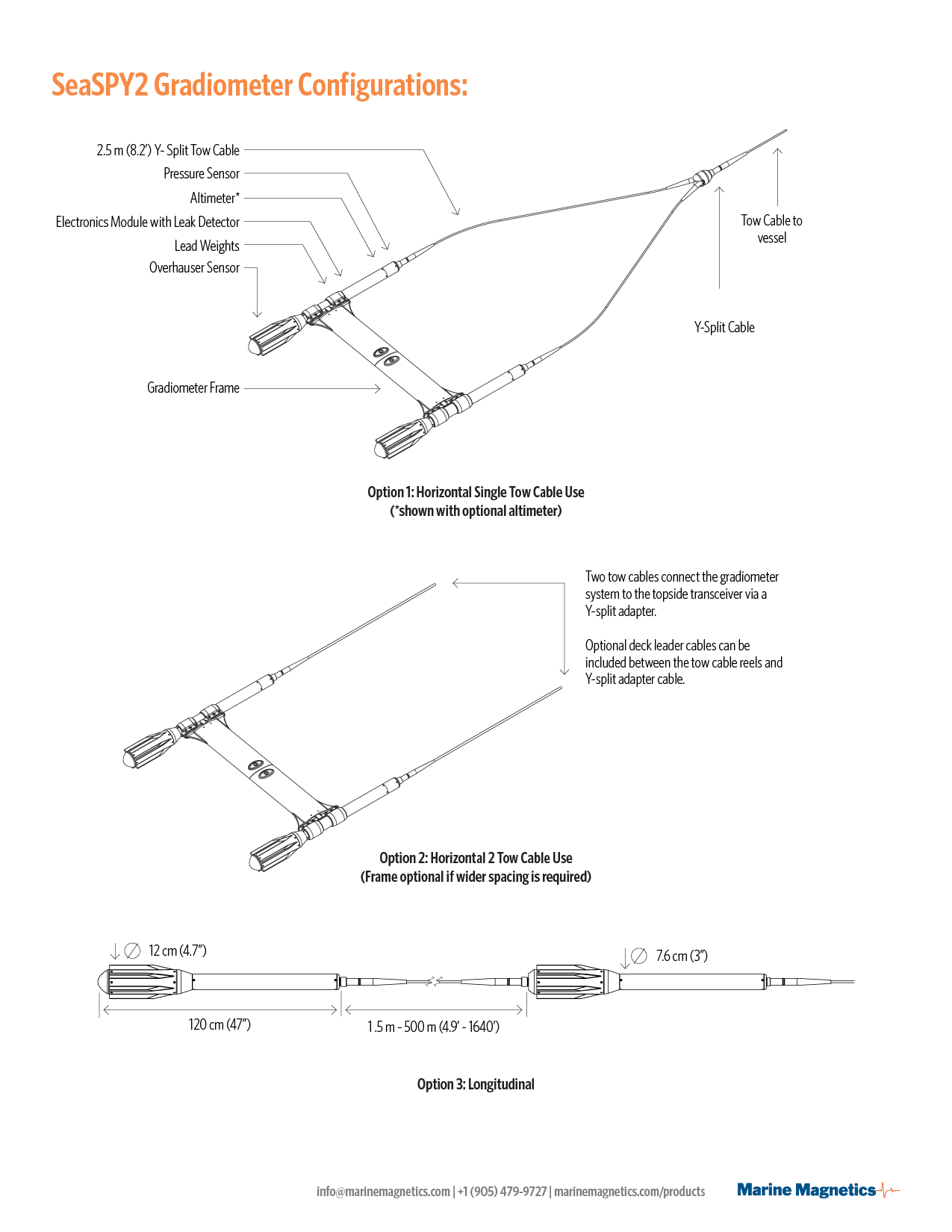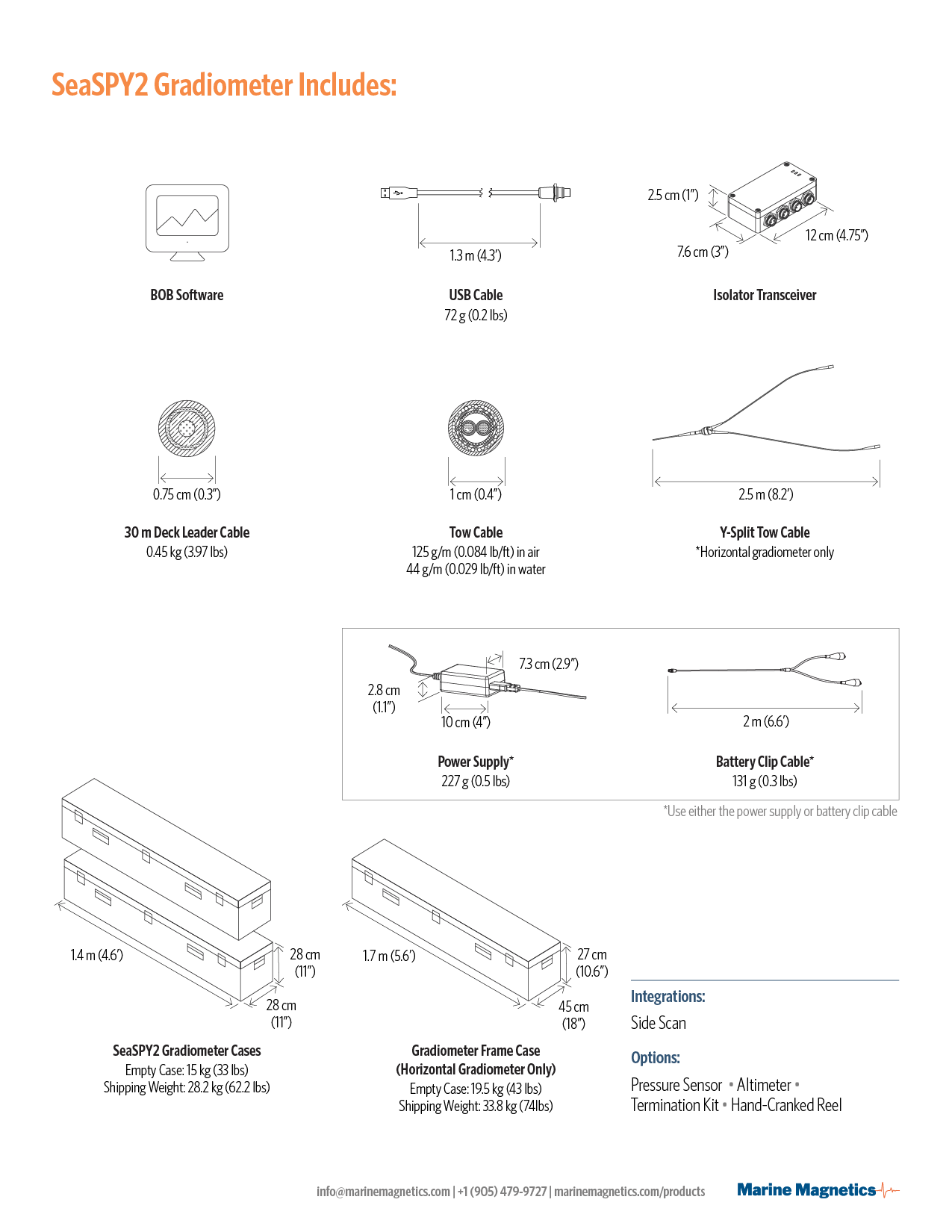-
Ideal for
Longitudinal gradiometers offer the largest variation in available baselines, from 1.5 m to more than 500 m. Long baselines provide superior gradient measurement sensitivity and increased detection ranges. They’re also hydrodynamically stable when deployed. Each towfish can be used as a single magnetometer. -
Shipwreck, Search and Salvage
Medium baseline measurement with a longitudinal gradiometer eliminates interference by geological bodies, while highlighting massive magnetic sources like steel hulls, boilers or engines. Smaller sources such as anchors or cannons will require a shorter baseline, and lower towing altitude. -
Environmental Surveys
Medium baseline measurement with a longitudinal gradiometer can highlight shallow magnetic sediments, while eliminating deeper geological influences. The baseline should be on the order of magnitude of the expected towing altitude. -
Exploration Geophysics
Long-baseline measurement with a longitudinal gradiometer is ideal since the bodies of interest are often far from the sensor, and produce very small gradients. The baseline should be on the order of magnitude of expected depth-to-source. -
How It Works
A gradiometer measures magnetic gradient in one dimension by subtracting the difference between two independent sensors. Since the Earth’s magnetic field is three dimensional, up to three independent gradient directions can be measured. For information on how to collect data in all 3 gradients simultaneously, see our SeaQuest Gradiometer. -
Certification
Don’t just take our word for it. We put our sensors under scrutiny, through rigorous independent testing, by a world authority belonging to INTERMAGNET. Intermagnet is the global network of observatories, monitoring the Earth’s magnetic field. The tests confirm our specifications: 0.01nT/Hz; counter sensitivity is 0.001nT. -
Get BOB Survey Software
Easily plan, configure, execute, and analyze your survey – free and native for all our magnetometers.
Learn more -
Call Us
To discuss whether a SeaSPY2 Longitudinal Gradiometer is the perfect fit for your application, please contact Gina Lopez: gina.lopez@marinemagnetics.com +1 (619) 655-0179
The SeaSPY2 Longitudinal Gradiometer comes with:
SeaSPY2 Longitudinal Gradiometer Includes
- Overhauser sensor
- Electronics module with Larmour counter
- Leak detector
- Depths ratings: 1000m (1500 psi), 3000m (5000 psi), 6000m (9000 psi)
| Performance | |
|---|---|
| Operating Zones | Worldwide. SeaSPY2 grad collects accurate results regardless of how it’s pointed in relation to Earth’s magnetic field. |
| Absolute Accuracy | 0.1 nT |
| Sensor Sensitivity | 0.01 nT |
| Counter Sensitivity | 0.001 nT |
| Resolution | 0.001 nT |
| Dead Zone | NONE |
| Heading Error | NONE |
| Temperature Drift | NONE |
| Power Consumption | 1 W standby, 3 W maximum, +2 W with altimeter |
| Range | 18,000 nT to 120,000 nT |
| Gradient Tolerance | Over 10,000 nT/m |
| Sampling Range | 4 Hz – 0.1 Hz |
| Communications | RS-232, 9600 bps |
| Power Supply | 24VDC (120-240 VAC compatible) (Acceptable range 9-30 VDC for single SeaSPY, 20-30V for gradiometers) |
| Magnetometer | |
|---|---|
| Towfish Length | 119 cm (47 in), + 10 cm (4 in) altimeter, + 5 cm (2 in) gradiometer |
| Diameter | 7.6 cm (3 in) |
| Weight in Air | 12 kg (27 lbs); 12.8 kg (28.5 Ibs) with altimeter |
| Weight in Water | 3.5 kg (7.8 lbs); 4 kg (8.8 lbs) with altimeter |
| Tow Cable | |
|---|---|
| Conductors | Twisted pair |
| Breaking Strength | 2,500 kg (5,500 lbs) |
| Outer Diameter | 1 cm (0.4 in) |
| Weight in Air | 125 g/m (8.4 lb/100 ft) |
| Weight in Water | 44 g/m (3 lb/100 ft) |
| Cable Termination | Field Replaceable |
| Floatation Cable | |
|---|---|
| Conductors | Twisted pair |
| Breaking Strength | 2,500 kg (5,500 lbs) |
| Outer Diameter | 1.9 cm (0.74 in) |
| Weight in Air | 125 g/m (8.4 lb/100 ft) |
| Weight in Water | -20 g/m (0.03 lbs/ft) |
| Cable Termination | Field Replaceable |
| Inter-fish cable | |
|---|---|
| Length | Custom: 1.5m - 500m (5 - 1600 ft) |
| Weight | 1.8 kg + 0.125 kg/m (custom length) |
Side Scan Integration
Integrations for SeaSPY2, SeaQuest2, Explorer and Synapse.



